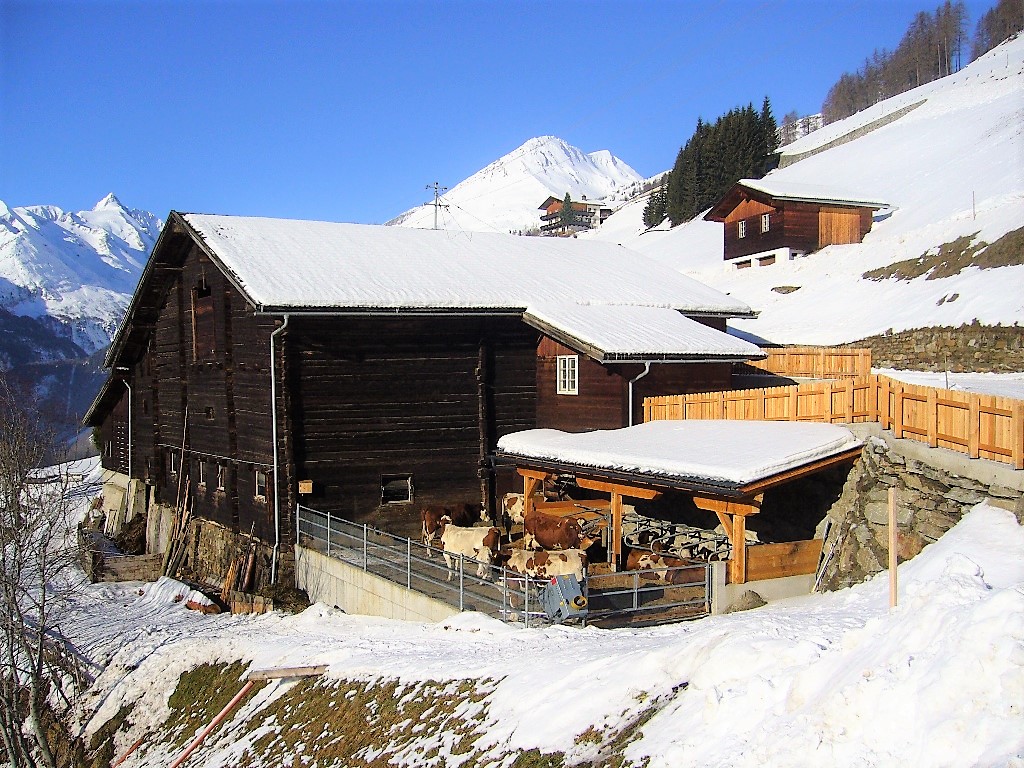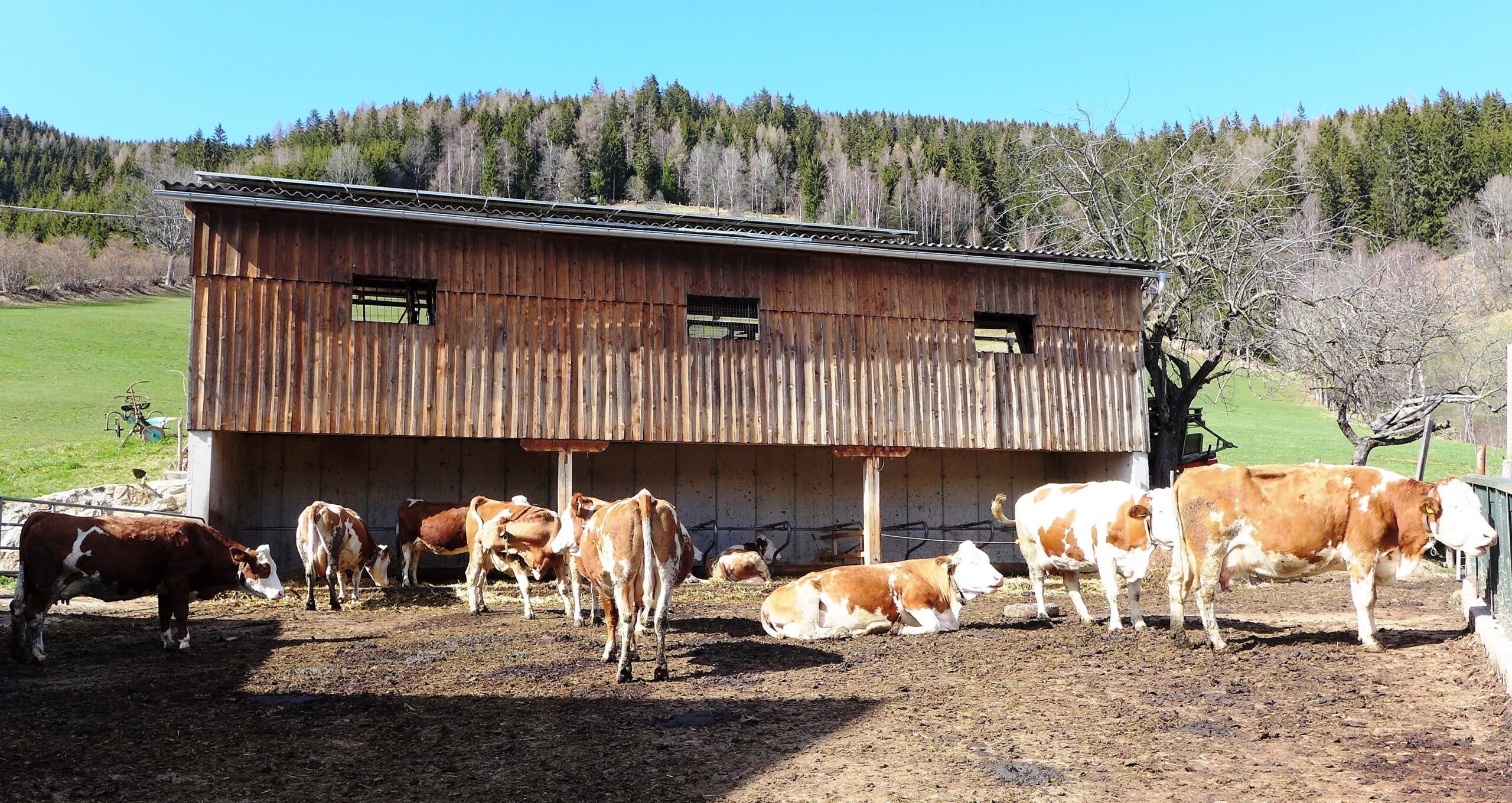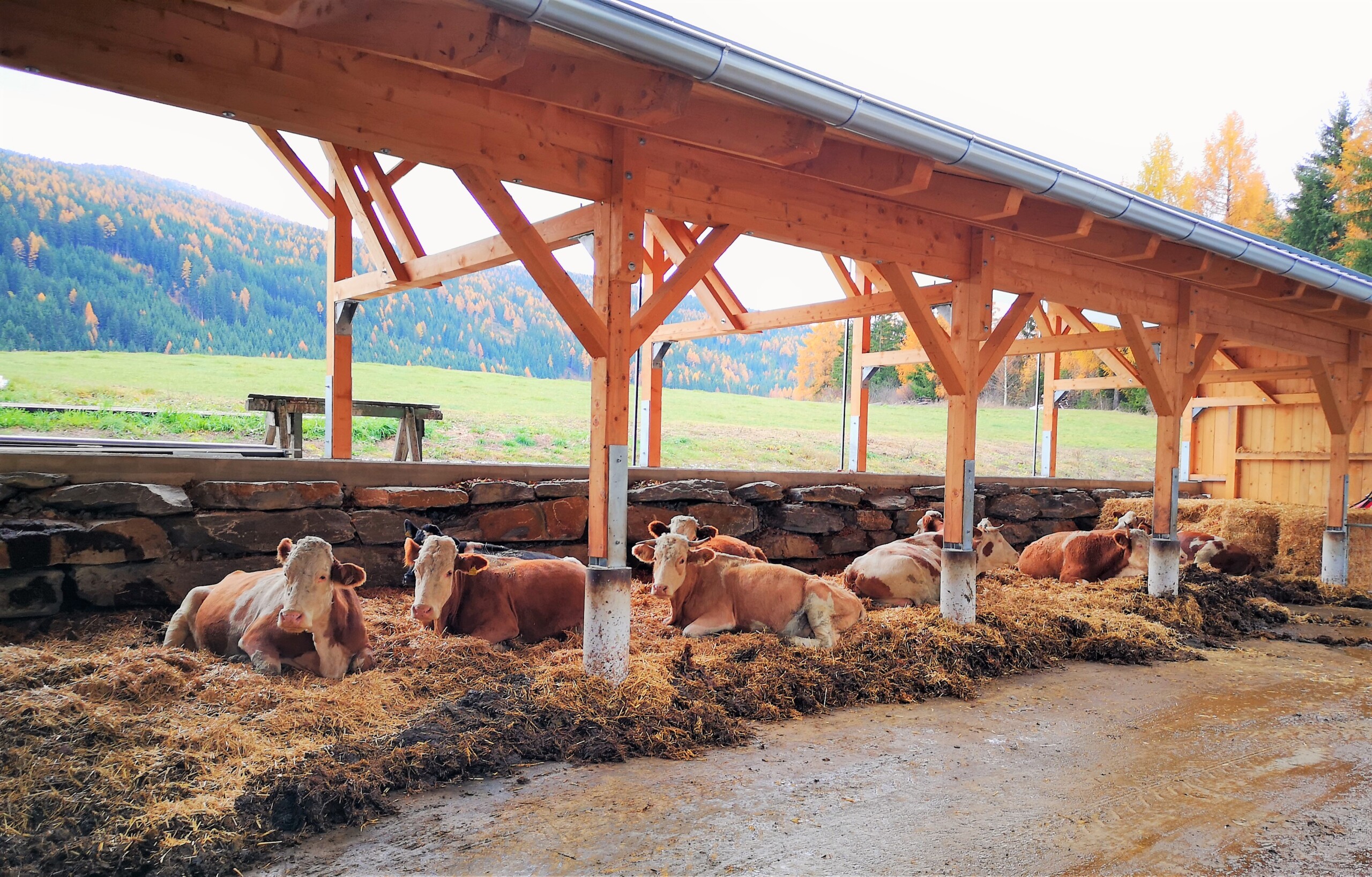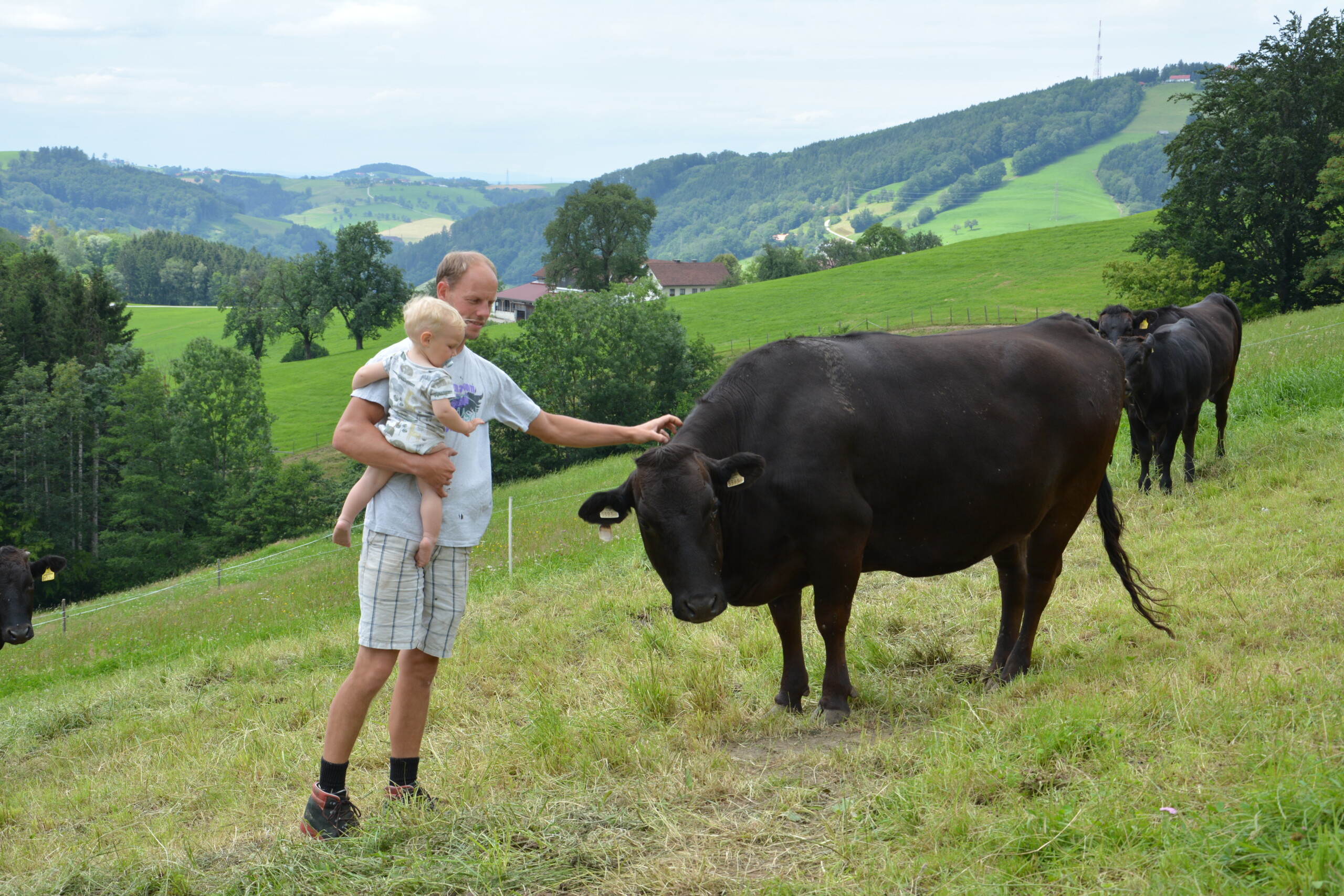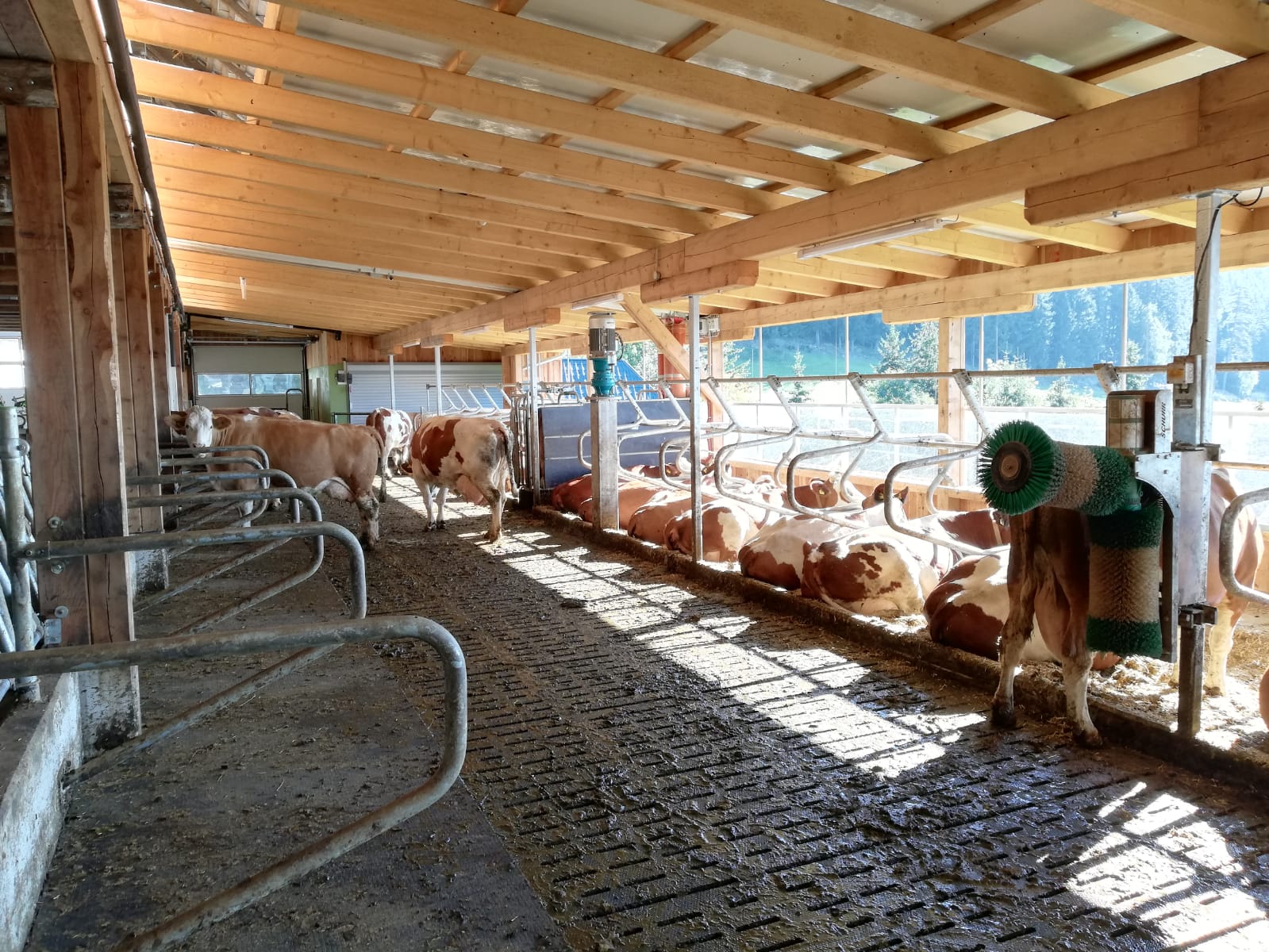Kāds bija izaicinājums/problēma, kas tika risināta?
In the future, processing companies and the food trade only want to pay milk subsidies to farms that keep cows in loose housing or free-range systems. Since barn construction companies often do not provide cost-effective conversion solutions for affected dairy farms, many small farms in cramped mountain areas are currently facing major structural and business challenges.
The aim of the European Innovation Partnership project is to find, document and evaluate sustainable, innovative construction solutions for dairy farms in confined mountain areas in Austria. Construction measures, costs, dzīvnieku labturību, and emission risk potentials are documented and sustainability criteria are evaluated. Constructional alternatives to the classic loose housing system are also being developed and evaluated. The results are summarized in two information brochures with farm examples and on the project homepage.
Kā jūs atrisinājāt problēmu?
A total of over 40 project farms were identified that have already successfully implemented an innovative construction solution or alternative to dairy farming in mountain areas. The conversion solutions and alternatives were portrayed by means of questionnaires and on-site surveys, including on-farm advice on construction. Based on the evaluation of the data, the advantages and disadvantages of certain construction solutions in terms of economic efficiency, labor savings, dzīvnieku labturību, and environmental impact (FarmLife-Welfare Index, Agrammon and Life-Cycle-Assessment) were presented and prepared for the consultation. Papildus, Lineārās inovācijas tiek aizstātas ar interaktīvām, kas nozīmē, ka galvenais aspekts inovāciju izstrādes procesā ir sadarbība starp dažādiem dažādu jomu dalībniekiem.’ reports on their experiences were collected, photos were documented and precise location and plan drawings were made before and after the conversion, which will be available in the future for advisory tools.
Kādi ir veiksmes faktori problēmas risināšanā?
Most farms recommend a comprehensive examination and the gathering of experience, among other things by visiting many conversion alternatives, in order to be able to better assess the effects of the conversion, not only from a financial point of view but also with regard to the phase of the conversion and the acclimatisation of people and animals to the new situation and the tourism effect. It also proved possible to plan several alternative building solutions. Instead of large stable construction companies, many farms found that small local craft enterprises provided much better, more innovative, and less complicated advice.
Conversion solutions made of wood deliver significantly better results for the ecological balance than conversion and new construction solutions made of concrete. The more pasture is offered, the lower the environmental impact of the farm.
All farms, whether with a conversion or extension solution or after conversion to a farm alternative, were very satisfied with the chosen solution.”
Negaidītas neveiksmes, ja kāds.
none
Gūtās mācības.
The acclimatisation process to the new construction solution took longer than most farms anticipated. While the animals seemed to have adapted to the new environment after 2-4 weeks, the farmers themselves said it took about 1 year.
The conversion from tethered to loose housing system sometimes leads to a slight increase in emissions. Emission reductions are possible by lowering the slurry storage, frequent cleaning of the stall area and sloping lying area with slurry drainage channel, as well as the diluted spreading of the slurry.
The conversion solutions mostly resulted in improved cleanliness of the animals. Particularly high animal welfare index in grazed animals.
The completion of questionnaires is best done in the presence of a project partner or consultant.
Kādu lomu spēlē padomdevējs vai konsultāciju dienests jūsu praktiskajā lietā??
Several workshops and meetings of the Operational Group have been held so far to design, discuss and strategize data collection, evaluation, and documentation within the project.
Regarding the project farms, the project staff and advisory service offered counseling interviews to the farmers regarding construction details and business management.
Projekta beigās, the final outcome (practical solutions for reconstruction) will be presented and disseminated in an advisory workshop, to distribute the knowledge and support other farmers in mountainous areas to implement economically viable solutions for existing farms.
Vai jūsu pieeja var tikt pārnesta un/vai pielāgota citiem jauninājumu izaicinājumiem un reģioniem?
Jā
Lūdzu, novērtējiet pārnesamību skalā no 1 Ļoti svarīga būs arī Štīrijas Lauksaimniecības kameras loma pēc projekta beigām, lai rezultātus izplatītu pēc iespējas plašāk 5
(kur 1 ir viegli un 5 ļoti grūti)
3
Par pieredzes apmaiņu par labo praksi, please contact DI Anna Herzog (a.herzog[plkst]lk-oe.at)
